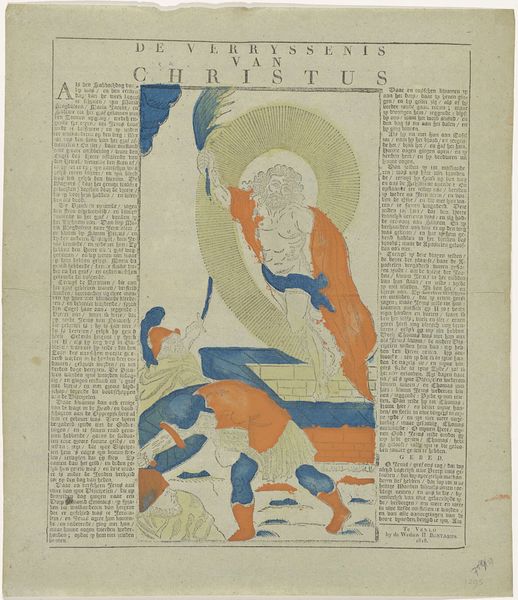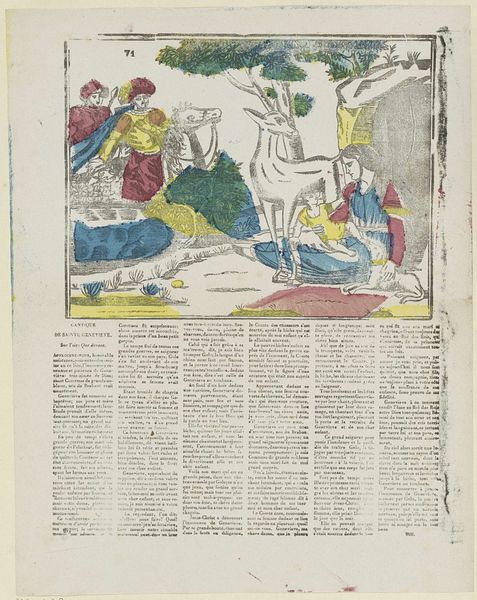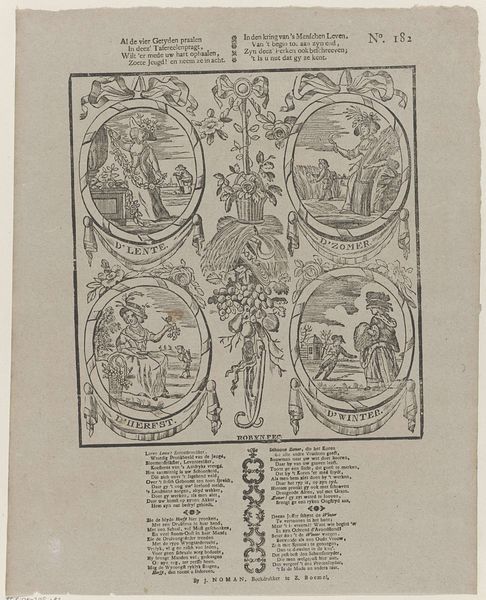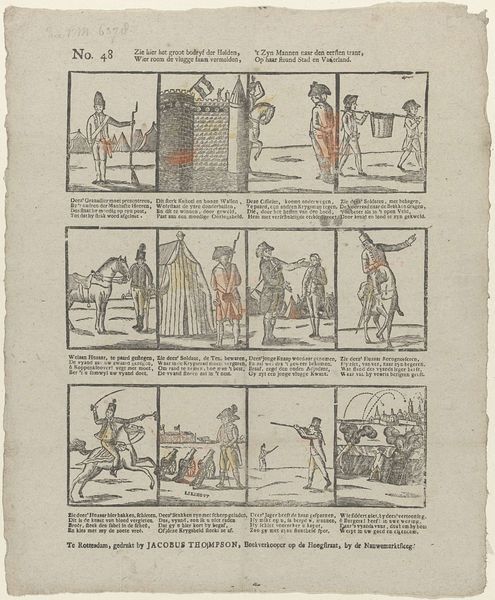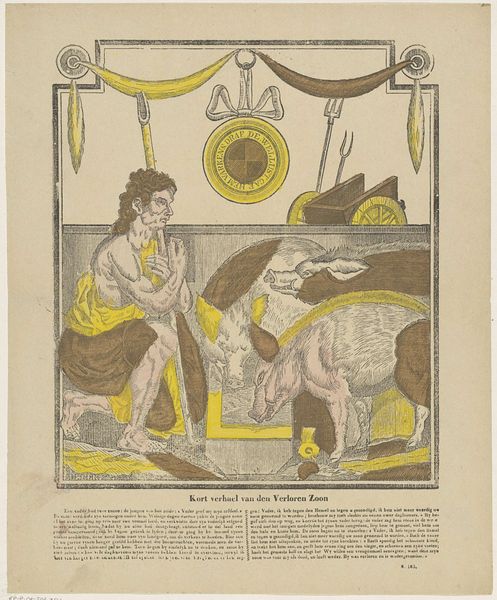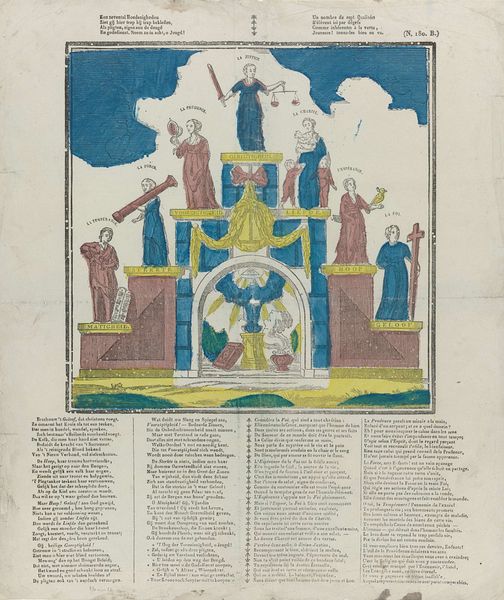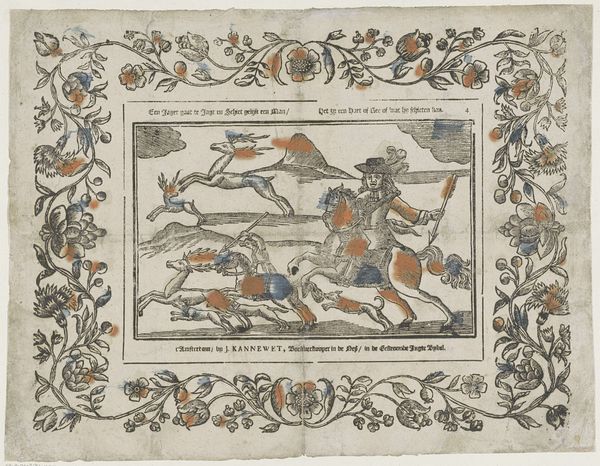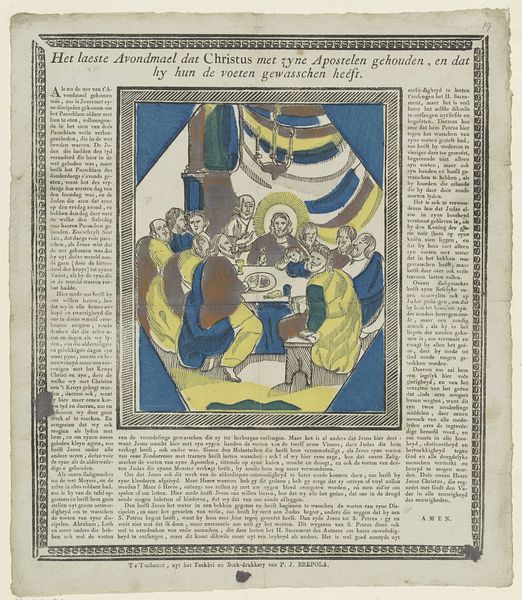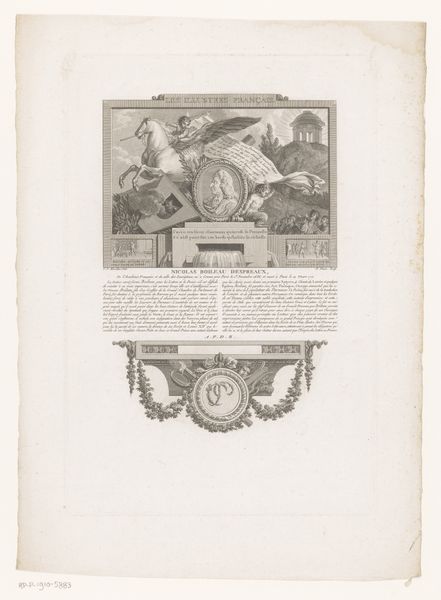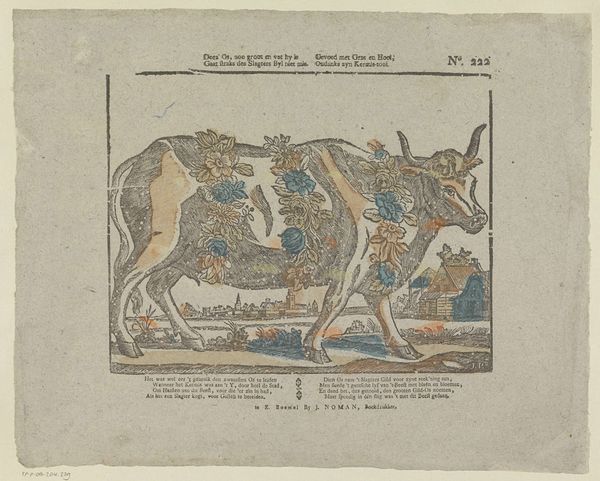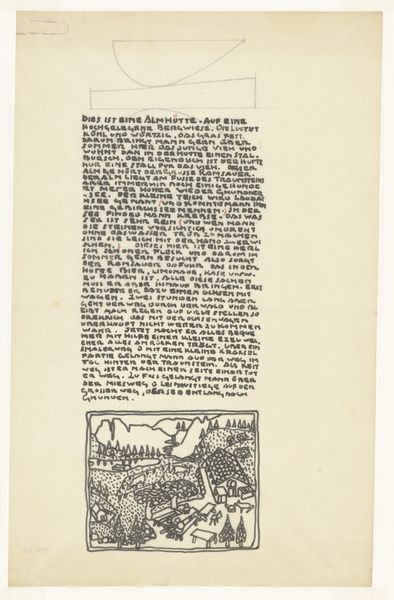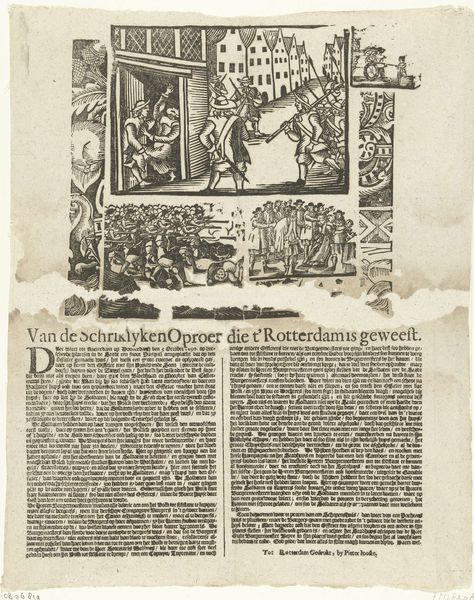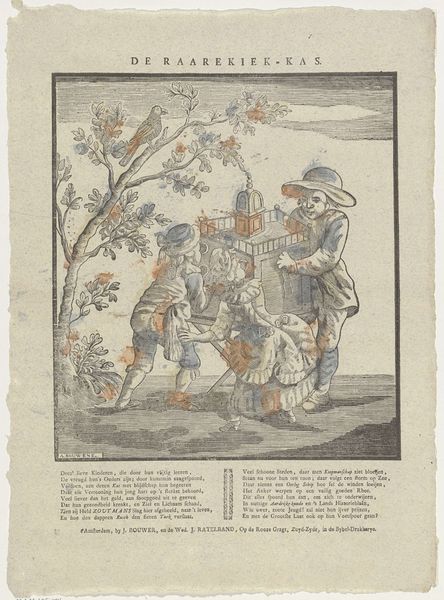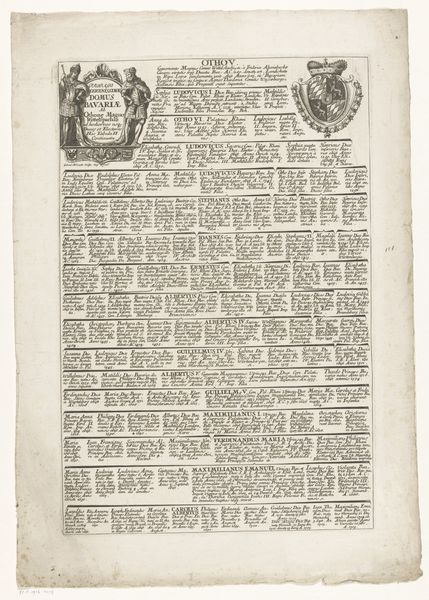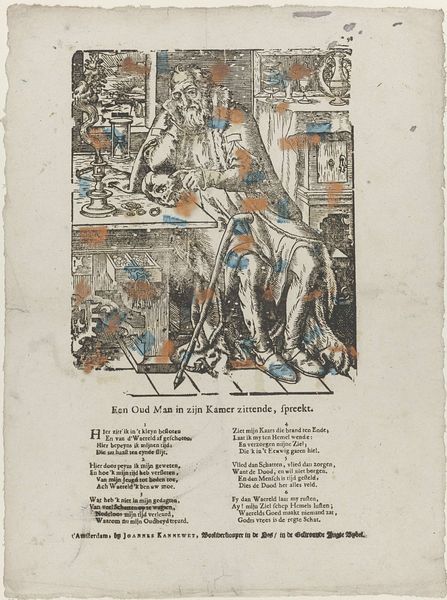
print, etching, woodcut
narrative-art
etching
traditional media
folk-art
woodcut
cartoon style
musical-instrument
Dimensions: height 390 mm, width 325 mm
Copyright: Rijks Museum: Open Domain
Curator: Looking at "The Life of St. Mary Magdalene," printed in 1808 by the widow H. Bontamps, I immediately notice a stylized simplicity. The colors are bold, almost playful, against what I imagine to be a deeply solemn narrative. It reminds me of those charming, somewhat crude, medieval woodcuts. What catches your eye? Editor: A stark contrast. The naivete of the folk-art style collides with heavy symbolism. We have Mary Magdalene in an almost operatic pose—perhaps mid-repentance. See the color blocks? Red-orange streaks shoot through, maybe suggesting passion, desire, and transformation; while cool blue signifies spirituality. I see redemption striving through sensuality. Curator: Ah, I like how you connected those colour choices to her narrative arc! The lines definitely have a kinetic energy to them. Do you read anything specific from her placement between the dwelling on one side, perhaps her former life, and Christ on the other? Editor: Absolutely. It’s the turning point. One almost wants to trace a literal path: starting from the secular domain marked by that building, journeying through turmoil represented by those swirling abstract fields, culminating at the foot of the cross—a rebirth in faith. It suggests that the earthly fades away and Christ's self-sacrifice is illuminated as truth in her spiritual journey. I bet that’s an important step. Curator: Yes, this particular imagery highlights the moment when Magdalene rejects a life of wealth and worldly pleasures for one of penitence and devotion. It certainly underlines what her spiritual choice means to her in material and emotional terms. Even in that rather "cartoonish" execution, you sense a complex emotional landscape within her. Editor: Exactly! And though somewhat faded, observe her expression. Not pure ecstasy, but something… knowing, world-weary. As if glimpsing a larger tapestry. These printed devotional images always encapsulate these complex psychological themes into manageable bites, I love it. It shows how images carry powerful messages far beyond simple visual representations. Curator: And for me, the somewhat "imperfect" technique –the uneven color, slightly skewed perspective – somehow reinforces that sense of very human yearning, that messy, unresolved quality that resonates so deeply. What began as a piece that may seem naive actually expresses something that lingers and haunts the soul. Editor: You put it perfectly: haunting. That’s the precise magic of folk art, and prints particularly—taking sacred symbolism, injecting raw human feeling, then disseminating the result across time and cultures.
Comments
No comments
Be the first to comment and join the conversation on the ultimate creative platform.
